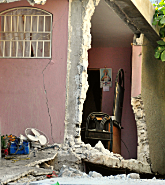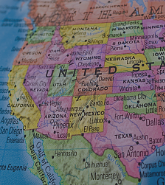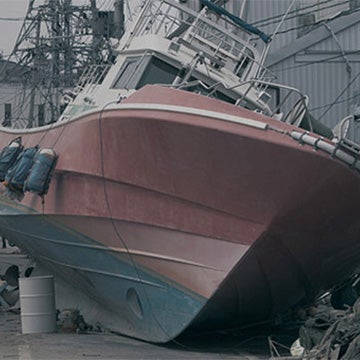The Japanese Meteorological Agency (JMA) recently heightened awareness around the significance of potential foreshocks as a precursor to a major earthquake.
On August 8, 2024, a magnitude 7.1 earthquake occurred beneath the Hyūga-Nada Sea off the southern coast of Kyushu at a 25-kilometer depth.
Following the earthquake, the JMA issued a 'Nankai Trough Earthquake Extra Information' advisory covering seven days through to August 15, acknowledging that the probability of a giant megathrust earthquake along the Nankai Trough plate boundary had increased by a factor of ten, from 0.1 percent per week to a one percent chance. The advisory has now expired.
This advisory was the first of its kind from the JMA and proposed a significant, if short-lived, increase in earthquake rates and a notice for enhanced earthquake preparedness as a megathrust event could happen, albeit at a remaining low probability.
The advisory was issued as part of a recent revision of JMA protocols after the catastrophic Mw9.0 2011 Tōhoku-Oki earthquake was preceded by a Mw7.2 foreshock (Goltz et al., 2024).
How should those concerned with modeling and applying risk in Japan respond?
Elevated Risk of Earthquake Occurrence
In general, the occurrence of one earthquake elevates the possibility of another earthquake occurring within the short to medium time frame.
This increased likelihood then decreases rapidly with time depending on the tectonic environment in which the earthquake has occurred.
The likelihood of experiencing a larger magnitude event after the initial earthquake also increases, however, the possibility of a larger magnitude earthquake happening remains low and carries considerable uncertainties.
Globally, a rule of thumb is that for any earthquake there is a five percent chance of the event being a foreshock, according to standard aftershock models. At the time of writing, the likelihood of a larger event following the Mw7.1 August 8 earthquake has already decreased significantly.
Studying the Plates
The recent Mw7.1 earthquake was close to or on the plate boundary between the subducting Philippines Sea Plate, moving down to the northwest and the overlying Amur ‘Eurasian’ plate.
This location is close to where huge fault ruptures typically initiate on the subduction zone, at the lower edge of the locked section of the subducting slab.
However, the tectonics in this earthquake’s vicinity are poorly established, with no consensus as to whether, or how much, the rates of giant Nankai Trough earthquakes have been elevated due to the August 8 earthquake.
The last three cycles of great subduction zone earthquakes along the Nankai Trough have revealed a pattern. In December 1944, the middle section broke, with the rupture starting from the eastern edge. Two years later, a new event broke most of the eastern section.
In 1854, all the eastern section was broken when the central and eastern sections broke only a day apart. Then in 1707, the eastern, central, and western (South of Kyushu) sections broke in a single rupture, this time as large as moment magnitude 9.
The larger the area of the broken subduction zone, the stronger and more widespread the shaking damage and the bigger the accompanying tsunami.
The gaps between the last three Nankai fault ruptures have been 147 years, and 90 years, while 78 to 80 years have passed since the most recent pair of ruptures. We are entering the recurrence window.
The August 8 earthquake could have triggered just the western section of the Nankai subduction zone (unbroken since 1707), or even all sections starting at the western end.
However, while it is true that each earthquake changes the likelihood of following earthquakes, there is only incomplete information that Mw7.1-type Hyūga-Nada earthquakes have triggered megathrust earthquakes on the Nankai Trough.
Modeling efforts have evaluated the complexity of Nankai Trough earthquakes, due to such triggering remaining inconclusive (see e.g. Hyodo et al, 2016) and the tectonic setting as well as the seismicity at this stage leading to an ongoing scientific debate about the likelihoods.
This does not imply that a Hyūga-Nada event cannot trigger a megathrust earthquake. However, given our current limited knowledge, we do not expect the likelihood of a megathrust event to be strongly influenced by such an event.
Future Application for Catastrophe Loss Modeling
The issuance of the first JMA Extra Information Advisory has highlighted a potential future application for catastrophe loss modeling.
After a potential foreshock, risk modelers would require the rapid application and release of modeled rates for a small subset of potential earthquakes.
Model users would then need an understanding of the implications of the adjusted rates to support short-term risk decision-making. The adjusted rates would likely need to be revised over days to months, as the underlying rates return to their original values.
Both sides would need detailed planning around how this new application could be delivered and applied, but as recent events show with the issue of an unprecedented JMA advisory, these new insights could prove invaluable.
References :
Hyodo, M., Hori, T. & Kaneda, Y. A possible scenario for earlier occurrence of the next Nankai earthquake due to triggering by an earthquake at Hyuga-nada, off southwest Japan. Earth Planet Sp 68, 6 (2016). https://doi.org/10.1186/s40623-016-0384-6
Goltz J. D., Yamori K., Nakayachi K., Shiroshita H., Sugiyama T. and Matsubara Y. Operational Earthquake Forecasting in Japan: A Study of Municipal Government Planning for an Earthquake Advisory or Warning in the Nankai Region. Seismological Research Letters 2024; 95 (4): 2251–2265. doi: https://doi.org/10.1785/0220230304











